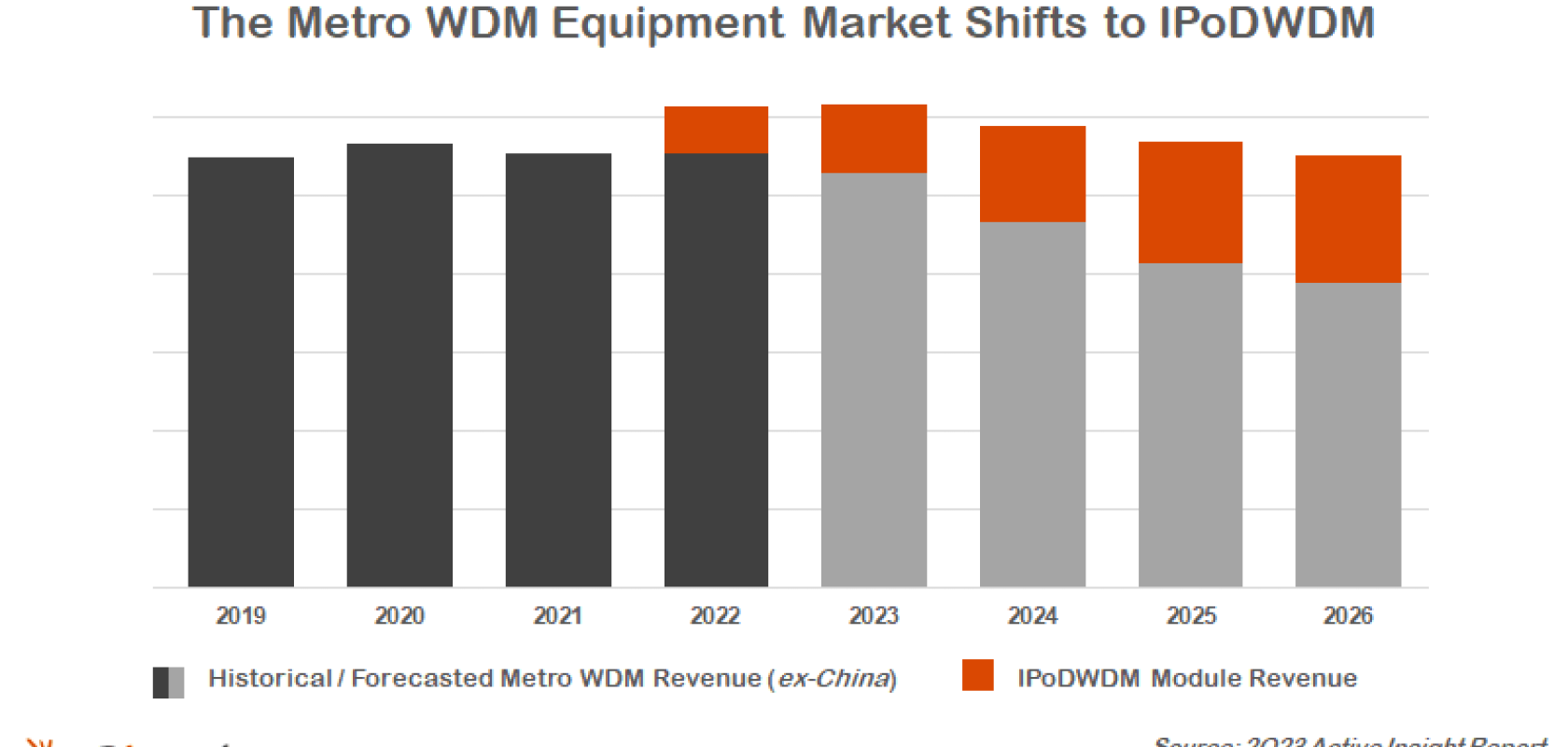Cignal AI has released its latest report, titled Assessing the Impact of IPoDWDM. The report is part of the company’s Active Insight series, which spans detailed conversations over the past six months with network operators, equipment makers, and component manufacturers.
The report series is designed to provide a qualitative and quantitative study of internet protocol over dense wavelength-division multiplexing’s (IPoDWDM) role in shaping network operator spend and deployment trends. The results are based on a model combining Cignal AI's industry knowledge and revenue and port shipment database, including optical components, optical transport hardware, and service provider routers.
Amongst the report‘s findings is the prediction that metro WDM equipment spending will soon be disrupted by a transition to pluggable optics used in routers. IPoDWDM is a 20-year-old concept, says the report, but new factors such as the emergence of 400ZR, architecturally progressive hyperscale network operators, and changing traffic and network management trends will catalyse widespread deployment by 2026.
The report also states that most IP-over-DWDM modules deployed by hyperscale operators will drive new applications and architectures, but that roughly half of these modules will replace traditional standalone hardware. In addition, Cignal AI predicts that total cloud spending on traditional optical transport hardware will decline 5% annually through 2026.
However, IPoDWDM module revenue will more than offset this decline as 400 and 800ZR pluggables will represent nearly half of WDM transport spend by hyperscale operators.
The firm forecasts that coherent modules used in IPoDWDM applications could represent a $1.6bn opportunity by 2026, however, service provider optical spending will be flat through 2026 as a drop in metro WDM spend due to IPoDWDM will offset growth in long-haul.
Kyle Hollasch, Lead Analyst for Transport Hardware at Cignal AI says: “IP-over-DWDM is poised to disrupt the metro WDM equipment market and will shift some revenue and technical leadership to vendors of coherent pluggables. A significant amount of hardware spending will be displaced, but total spending on equipment and pluggables will continue to grow due to the new applications enabled by router-hosted pluggable coherent modules.”


